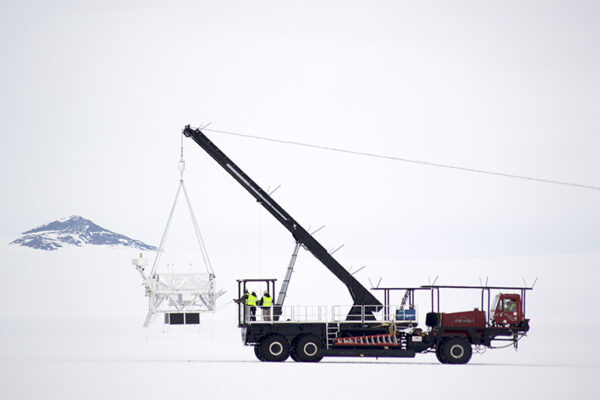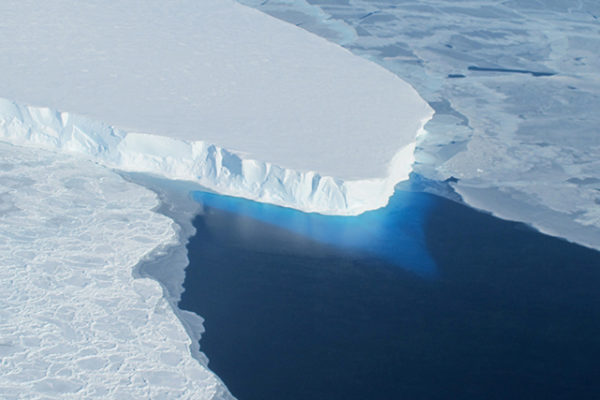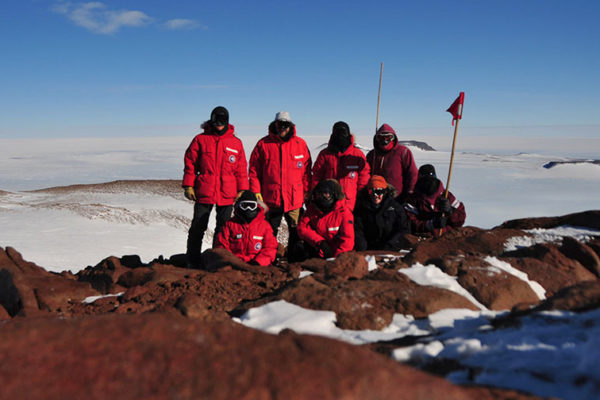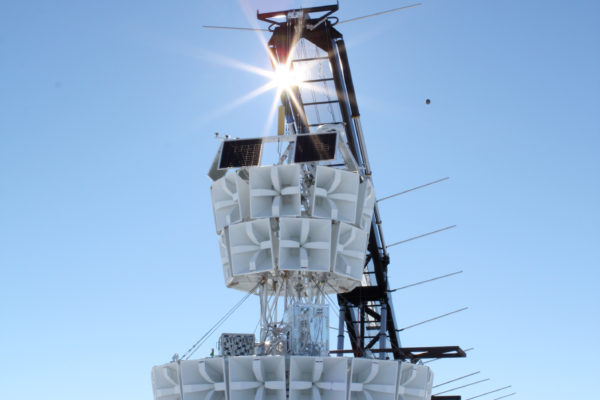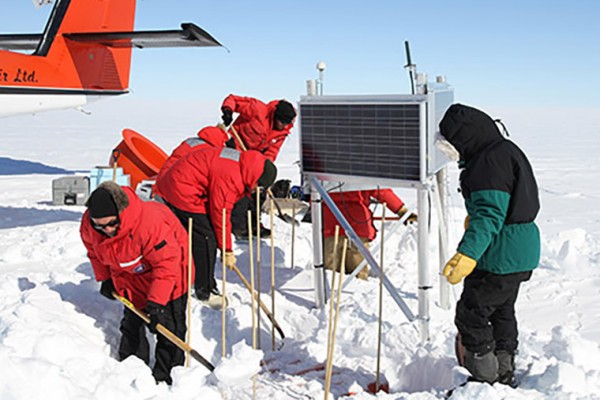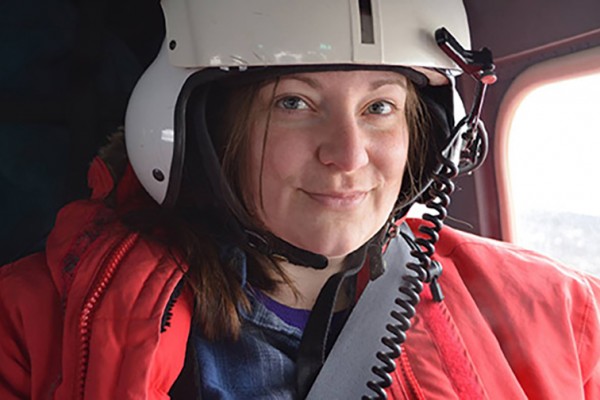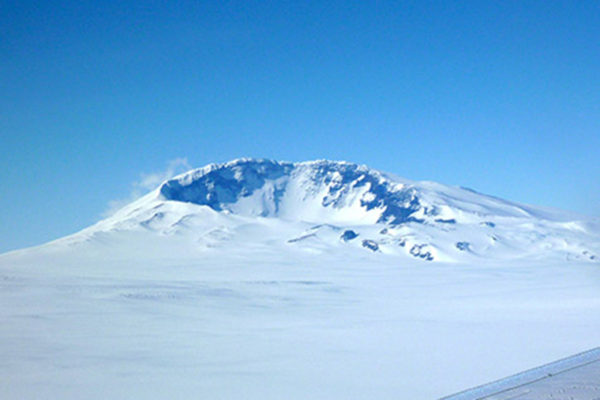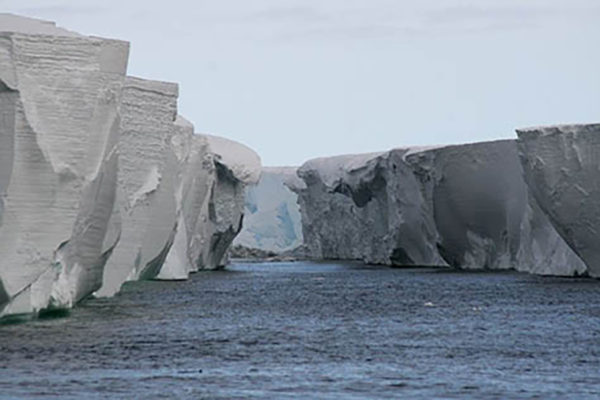Catching up with SuperTIGER, 130,000 feet above Antarctica
A balloon-borne scientific instrument designed to study the origin of cosmic rays is taking its second turn high above the continent of Antarctica three and a half weeks after its launch.
Bedrock in West Antarctica rising at surprisingly rapid rate
The findings, reported in the journal Science, contain positive implications for the survival of the West Antarctic Ice Sheet, which scientists had previously thought could be doomed because of the effects of climate change, according to study co-author Douglas Wiens of Arts & Sciences.
Hunting for meteorites
Every austral summer, a group of volunteers heads off to a remote region
of Antarctica to set up a field camp on the ice. For the next month, they search the ice and nearby glacial moraines for dark rocks that might be extraterrestrial in origin. Research scientist Christine Floss describes this year’s trip, which included a record-setting day.
ANITA III launched over Antarctica
Calm winds allowed the ANITA III experiment to be launched into the polar vortex above Antarctica on Dec. 17. The instrument consists of 48 radio receivers that are listening for pings that will be generated when ultra-high-energy cosmic rays generate radio-frequency bursts that reflect off the ice and up to the instrument at a float altitude of 120,000 feet, four times higher than commerical airliners cruise.
2010 Chilean earthquake triggered icequakes in Antarctica
In March 2010, the ice sheets in Antarctica vibrated a bit more than usual as a surface wave from an 8.8-magnitude earthquake in Chile 3,000 kilometers away passed through the ice. Powerful earthquakes were known to trigger secondary quakes along faults in land; this was the first observation of triggered quakes in the ice. Washington University in St. Louis seismologist Doug Wiens says the finding is one of several discoveries made possible by POLENET, an array of seismic stations that reaches for the first time into the interior of Antarctica.
As the heat of summer settles on St. Louis, here’s a gust of cold air from Antarctica
Washington University in St. Louis postdoctoral research associate Aubreya Adams went to Antarctica in January and February 2014 to help with routine maintenance of seismic stations on the West Antarctic ice shelf. But nothing in the southern continent is ever routine. In her short stay, she experienced extreme weather, saw a rare mirage, visited bizarre ice vents on the volcanic Mount Erebes and saw first hand the effects of the warming that recently made front page news in The New York Times.
Volcano discovered smoldering under a kilometer of ice in West Antarctica
A temporary seismic array in Marie Byrd Land in West Antarctica recorded two bursts of activity in 2010 and 2011. Careful analysis of the events shows they originate from a subglacial volcano at the leading end of a volcanic mountain chain. The volcano is unlikely to erupt through the kilometer of ice that covers it but it will melt enough ice to change the way the ice in its vicinity flows.
Weighing the Antarctic ice sheet
The slow rebound of the bedrock as ice melts can be used to weigh the Antarctic ice sheet. Calibrating rebound will make it possible to measure how much mass the has lost since the ice sheets reached their maximum extent more than 20,000 years ago and how much it is currently losing. Two National Science Foundation grants will fund the installation of seismographs to calibrate crucial parts
of the Antarctic ice-weighing machine.
Rough guide to Super-TIGER watching
The word from Antarctica is that the polar vortex is setting up early this year and the balloon-borne Super-TIGER cosmic-ray experiment may be launched into the vortex any day now. Once the launch starts, web cams and a tracking map will go live at NASA’a Columbia Scientific Balloon Facility site Blogs and Twitter feeds are already providing a lively running commentary on the buildup to launch.
U.S.-led team confirms an Alps-like mountain range exists under east Antarctic ice sheet
Flying twin-engine light aircraft the equivalent of three trips around the globe and working in temperatures that averaged minus 30 degrees Celsius, an international team of scientists, including one from Washington University in St. Louis, has not only verified the existence of a mountain range that is suspected to have caused the massive East Antarctic Ice Sheet to form, but also has created a detailed picture of the rugged landscape buried under more than four kilometers (2.5 miles) of ice. Douglas A. Wiens, Ph.D., WUSTL professor and chair of earth and planetary sciences, is part of the seismology team.
View More Stories
